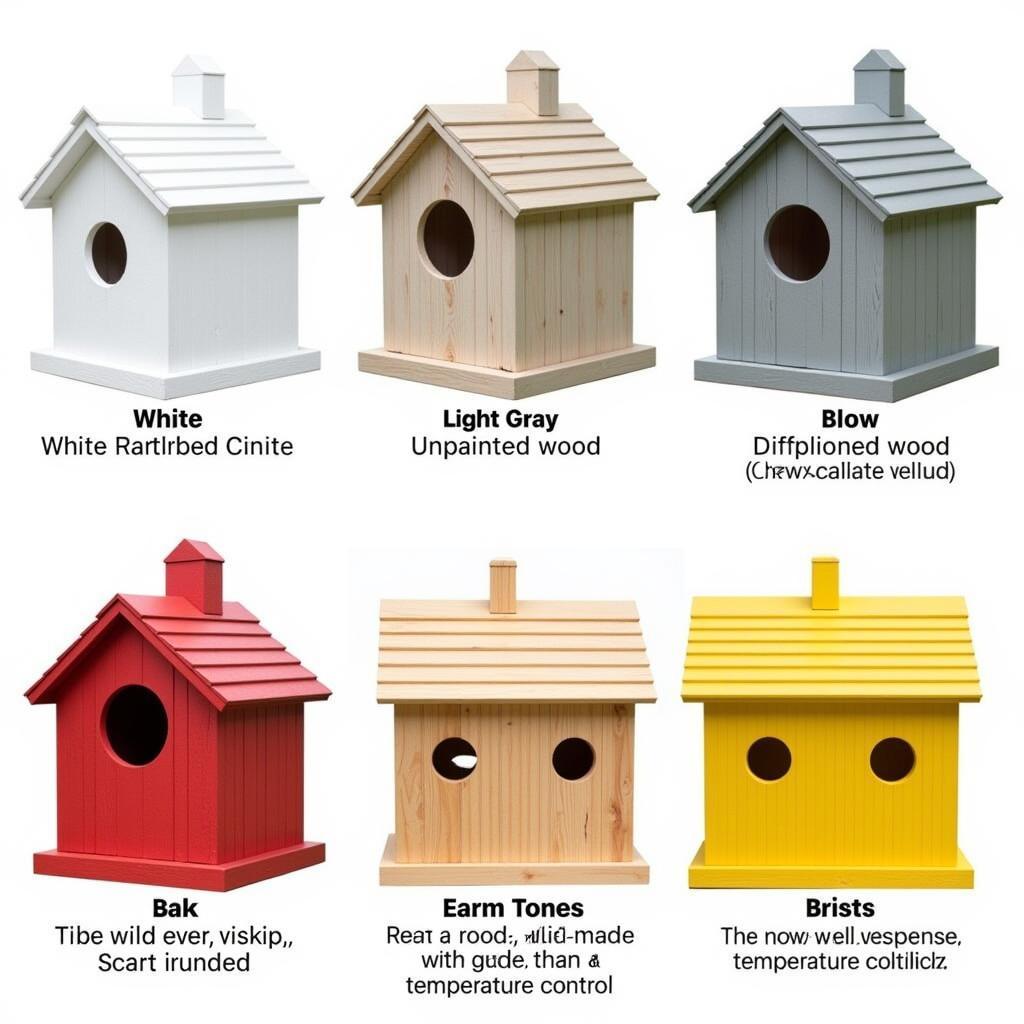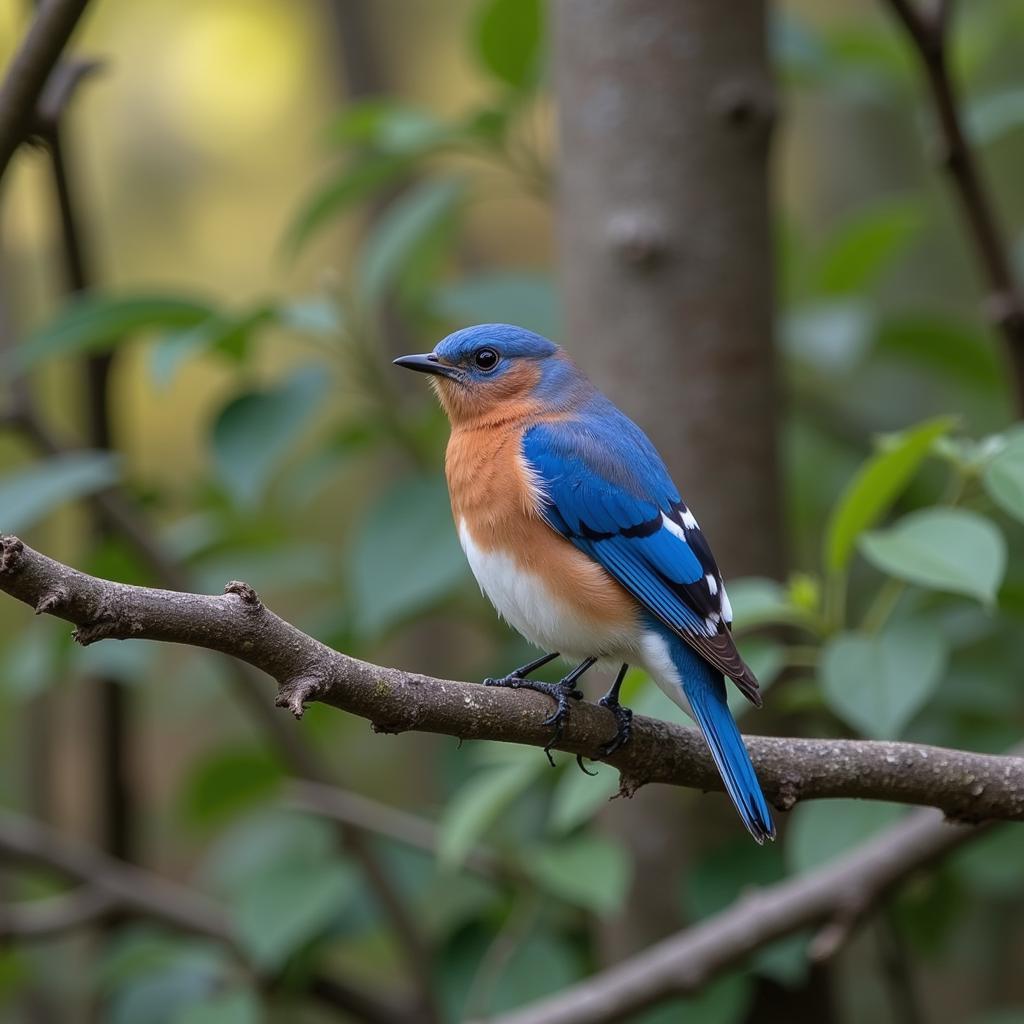Choosing the right color for a bluebird house can significantly impact its success in attracting these beautiful birds to your backyard. While bluebirds aren’t particularly picky about color, understanding their preferences and how colors affect the internal temperature of the house can help you create the perfect nesting environment.
Choosing the right hue for your bluebird house involves more than just aesthetics. It’s about understanding what makes a house attractive to bluebirds and ensuring their comfort and safety. After all, you’re creating a home for them! For helpful tips on painting a birdhouse in general, check out what color to paint birdhouse.
The Best Colors for Bluebird Houses
The ideal colors for bluebird houses are muted, natural tones that blend in with the surrounding environment. This helps to camouflage the house from predators and create a sense of security for the bluebirds. Think of shades like earth tones, browns, and muted greens. These colors mimic the natural environment, making the bluebird house feel like a safe and secluded haven.
- White: While not a natural camouflage color, white helps reflect sunlight, keeping the house cooler in hotter climates. This is crucial for the well-being of the nestlings.
- Light Gray/Unpainted Wood: These options also offer good heat reflection and blend seamlessly into the background, providing some protection from predators.
- Avoid Bright Colors: Stay away from vibrant hues like red, orange, and yellow, as these can attract unwanted attention from predators and may even deter bluebirds. Learn more about which colors attract birds at what color birdhouse attracts birds.
 Bluebird House Color Options
Bluebird House Color Options
Why Color Matters for Bluebird Houses
Color plays several important roles in the success of a bluebird house:
Temperature Regulation
Darker colors absorb more heat, which can make the interior of the house dangerously hot for the nestlings, especially in warmer climates. Conversely, lighter colors reflect sunlight and help maintain a more comfortable temperature inside the house.
Camouflage and Protection
Choosing a color that blends in with the surrounding environment helps to camouflage the house from predators like snakes, raccoons, and cats.
Attracting Bluebirds
While bluebirds aren’t overly concerned with the color of the house itself, the right color can contribute to an overall sense of safety and security, making it more appealing to nesting pairs. For further information on colors that attract birds, you can visit what color bird houses attract birds.
Do Bluebirds Prefer a Specific Color?
Bluebirds don’t have a strong color preference for their houses. Their primary concern is the safety and suitability of the nesting location. However, choosing the right color can contribute to these factors.
 Bluebird in Natural Habitat
Bluebird in Natural Habitat
Creating the Ideal Bluebird House
Beyond color, several other factors contribute to a successful bluebird house:
- Placement: Place the house in an open area with a clear flight path, away from dense vegetation that could harbor predators.
- Height: Mount the house 4-10 feet above the ground.
- Entrance Hole Size: Ensure the entrance hole is the correct size (1.5 inches in diameter) to prevent larger birds from entering.
- Ventilation: Proper ventilation is crucial for regulating temperature and humidity inside the house.
- Cleaning: Regularly clean the house after each nesting season to prevent the buildup of parasites and diseases.
Conclusion
Choosing the right color for your bluebird house is an important consideration in attracting these beautiful birds to your yard. While bluebirds aren’t particularly picky about color, opting for natural, muted tones that provide camouflage and temperature control is key to creating a safe and appealing nesting environment. By following these guidelines, you can increase your chances of providing a welcoming home for a bluebird family.
FAQ
- What is the best color for a bluebird house? Natural, muted tones like white, light gray, and unpainted wood are excellent choices.
- Should I paint my bluebird house a bright color? No, avoid bright colors as they can attract predators.
- Does the color of a bluebird house affect the temperature inside? Yes, darker colors absorb more heat, while lighter colors reflect sunlight.
- What other factors are important for attracting bluebirds? Placement, height, entrance hole size, ventilation, and cleanliness are all crucial.
- Do bluebirds have a color preference? No, they prioritize safety and suitability over color.
- Why should I avoid bright colors for a bluebird house? Bright colors can attract predators and may deter bluebirds.
- Can I leave my bluebird house unpainted? Yes, unpainted wood is a good option as it provides natural camouflage and heat reflection.
Need further assistance? Contact us at Phone: 0373298888, Email: [email protected] or visit us at 86 Cau Giay, Hanoi. Our customer service team is available 24/7. We also have articles covering topics such as what color to paint a birdhouse and which colors attract different bird species.

